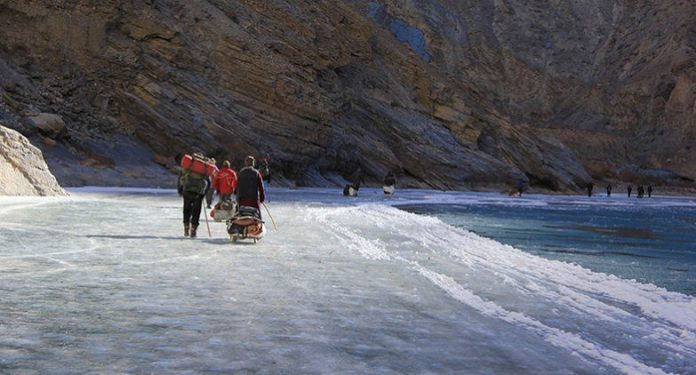All you need to know about chadar trek
Are you looking for an adventure that will challenge your physical and mental strength? Chadar Trek is a trekking trail in the Himalayas, located in Ladakh, India, that is gaining popularity among adventure lovers. This trek is unlike any other as you will be walking on frozen sheets of Zanskar River. It’s a thrilling and daunting experience that tests your courage and strength. In this blog, we will discuss all you need to know about the Chadar Trek and its route, duration, weather, safety and more. You will get to know about the beautiful villages, monasteries, and treks that you can visit during the Chadar Trek. So if you want to challenge your survival skills and explore the majestic beauty of Ladakh, this blog is just right for you.
chadar trek vs other trek
Chadar trek is one of the most adventurous trekking experiences in India. It is an exciting and challenging trek which follows the frozen Zanskar River in the Himalayan region of Ladakh. The trek is not only known for its breathtaking landscapes, but also its unique experience of walking over a frozen river.
Compared to other treks, chadar trek stands out for its unique experience of walking over a frozen river, which is a one-of-a-kind experience. It also offers some of the most stunning landscapes with majestic mountains, frozen waterfalls, and glaciers. The trek is also known for its serene environment, making it an ideal place for those looking to escape the hustle and bustle of daily life.
In addition, chadar trek is also well known for its extreme weather conditions, making it that much more challenging and rewarding. Trekkers also have to be prepared to face the cold and sometimes freezing temperatures.
Overall, chadar trek offers an incredible experience that cannot be found anywhere else. It is a great option for anyone looking for a unique and challenging trekking experience. With its breathtaking views and challenging conditions, chadar trek is definitely one of the best treks available in India.
chadar trek is hard or not
Chadar Trek, one of the most popular treks in India, has a notorious reputation as a difficult trek. It is renowned for its stunning beauty and extreme temperatures.
However, despite its difficulty and challenging conditions, Chadar Trek is by no means impossible. It is possible to complete the trek with the right preparation and knowledge.
The first step to increase your chances of success is to be aware of the weather conditions and the terrain. The trek is on a frozen river and is prone to sudden changes in temperature and snowfall. It is important to be aware of the best time to go for a Chadar Trek and be prepared for the unexpected.
The second step is to ensure that you are physically fit and have a good level of fitness. This trek involves a lot of walking and carrying a heavy backpack. You should have a good level of stamina and strength to be able to complete the trek.
Finally, it is important to have the right equipment. This includes warm clothing, camping equipment, and trekking poles. It is also essential to have a support team, as the trek can be quite dangerous and you may need help.
Overall, Chadar Trek is not an easy trek, and it can be quite challenging
best time to do chadar trek
The best time to do the Chadar Trek is during the winter months of January and February. This is when the Zanskar River in the Himalayas is frozen and makes for an incredible trekking experience.
The Chadar Trek is renowned for its beautiful and breathtakingly rugged landscapes. The trek itself is a difficult one, and requires a great deal of physical and mental stamina. This is why it is recommended to only attempt it in the winter months when the conditions are most favorable.
The winter months are also the coldest in the region, and temperatures can dip to -20 degrees Celsius. This means that adequate winter clothing and the right gear is essential. It is also essential to acclimatize beforehand, as the altitude of the trek can reach up to 4500 metres.
The winter months also bring with them longer days, making it possible to plan the itinerary in such a way that trekkers can reach their destination each day before sunset. It also means that one can take advantage of the clear night skies and star gaze as the area is so remote



